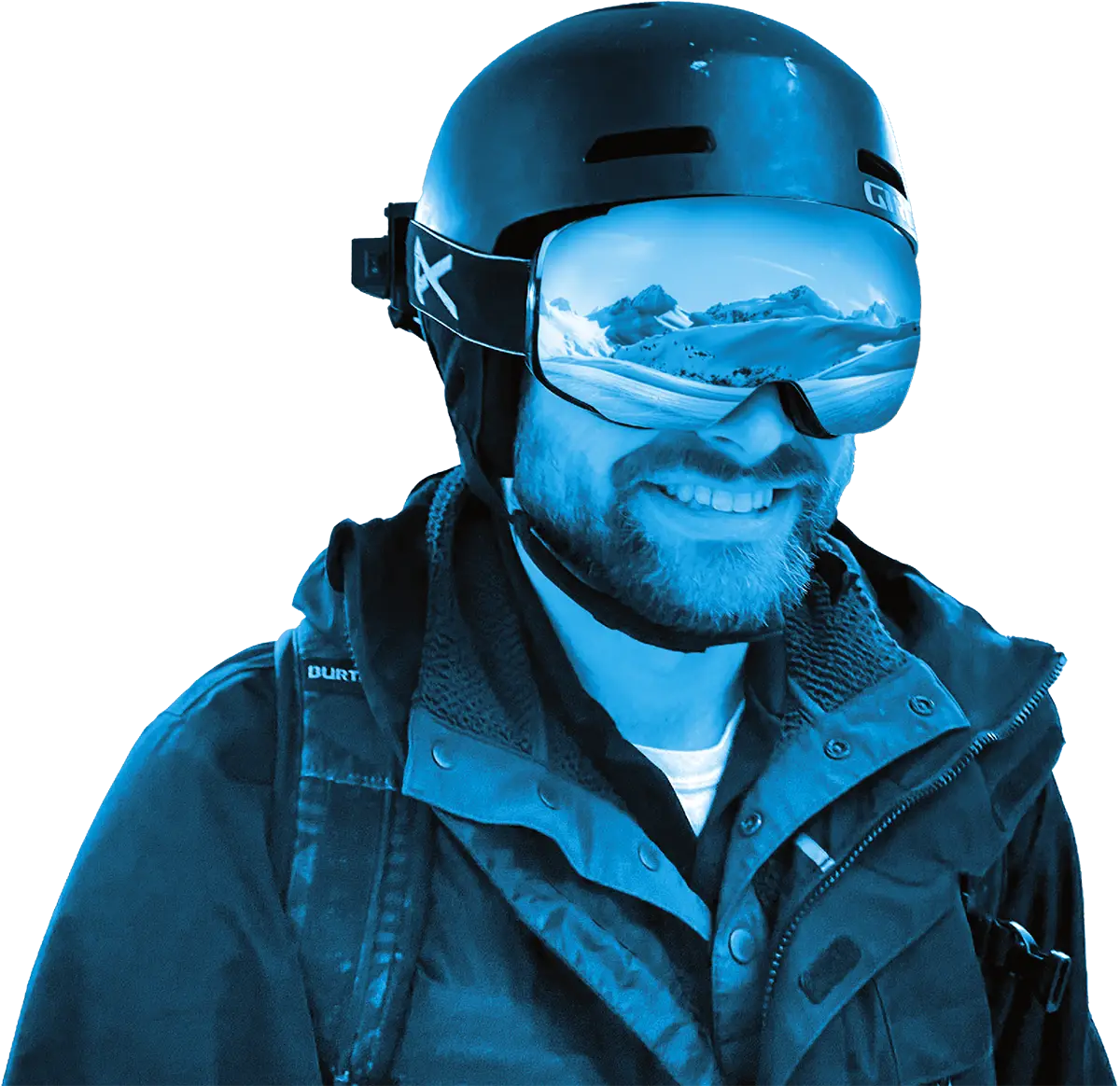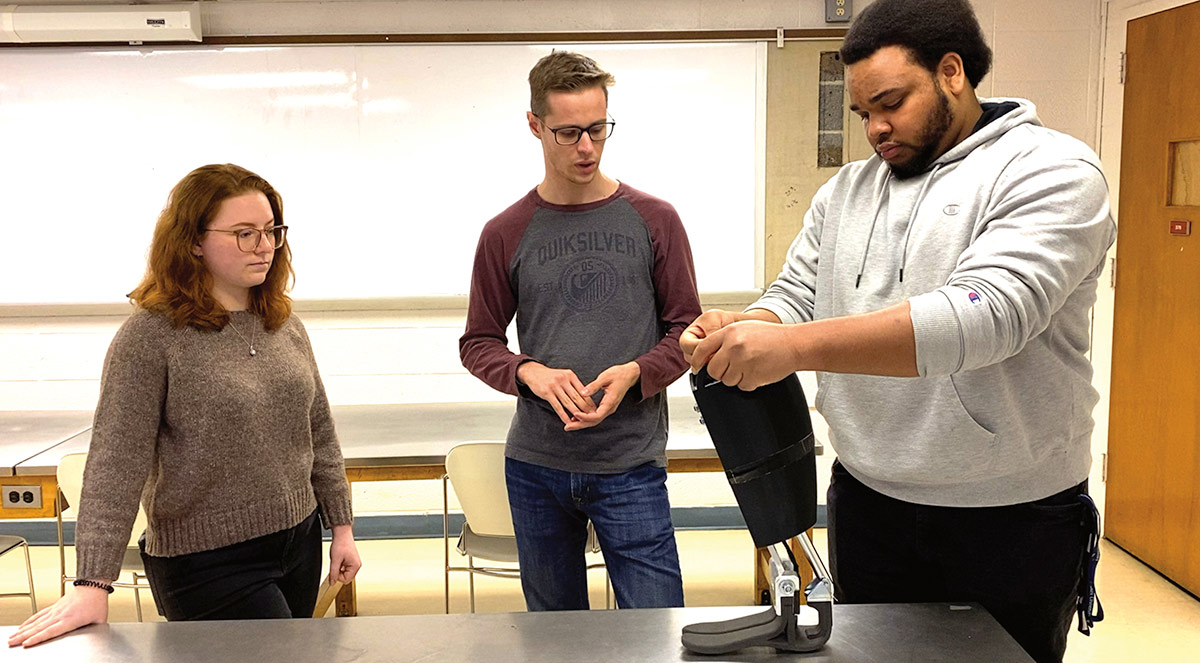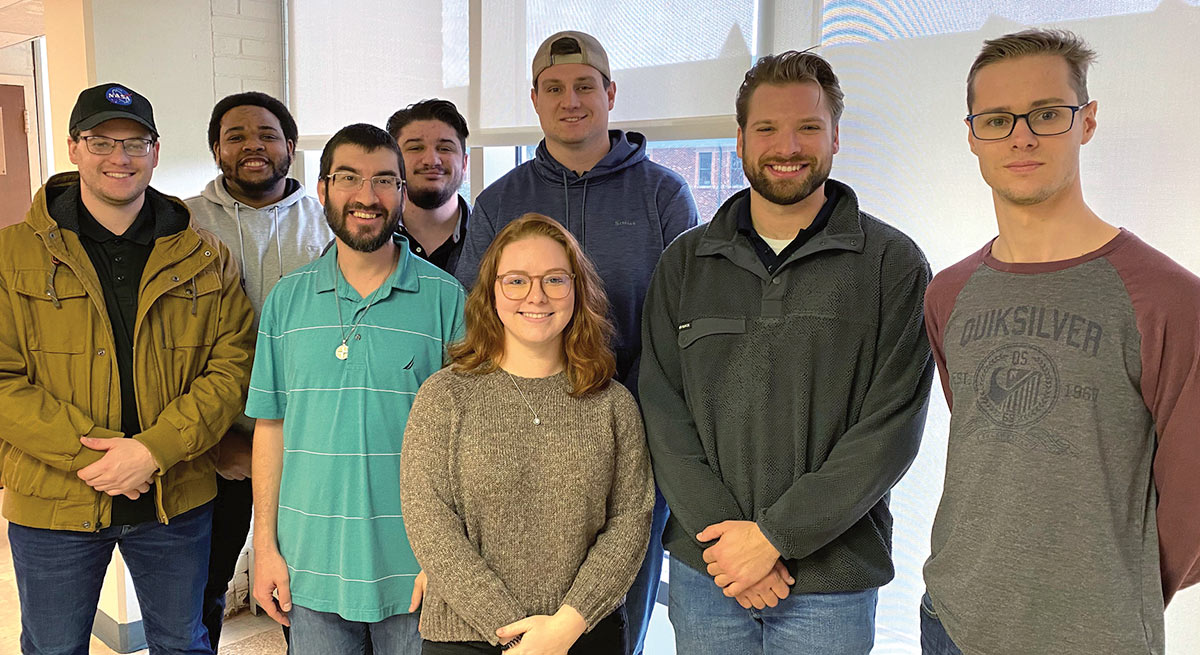Senior Engineering Capstones Have the Potential to Change Lives for the Better
That’s what two mechanical engineering groups were hoping when they presented their capstones late last fall. The first group, with Corey Gallis ’23, Mark Kozub ’22, Brendan Lee ’22 and Zachary Mazur ’22, demonstrated the Hindsight Blind Spot Monitoring System. The Hindsight is a sophisticated ski helmet that monitors the blind spots for skiers and snowboarders with impaired hearing by alerting them via LiDAR (light detection and ranging), the same technology used by the National Oceanic and Atmospheric Administration (NOAA) to examine the surface of the Earth and its oceans. Vibrations inside the helmet instantly identify precisely where other skiers are in their blind spot. The team worked together to create the custom design, then printed all components in the additive manufacturing 3D lab in the Mark Engineering Center.

The pride that the team has for their invention is apparent. “This project is very fulfilling,” said Lee. “Obviously there are improvements that can be made to make the helmet production-ready, but what we’ve done here is really great,” he added. Mazur agreed. “We had a lot of time and budget limitations,” he said. “But it’s really cool to see what we could accomplish by putting our minds together to solve a problem.”
The other team, Elijah Hayes ’20, Emma Kimmel ’22, MS Bioengineering ’23 and Thomas Renon ’22, spent their senior year developing Active Ankle, a cost-effective leg prosthesis alternative for trans-tibial (below the knee) amputees. “What Active Ankle does is helps to propel the leg forward with a motorized ankle movement,” said Kimmel. “With regular prostheses, you don’t get that extra motorized ankle movement,” said Hayes. “The motor gives the user an extra boost.” The team designed all the components, printed them in the 3D lab and added a sensor to the footplate to detect how many points of contact the foot will need to propel forward or go backward to get the desired range of motion.

“This whole process from beginning to end has been very challenging,” said Hayes. “We had the freedom to choose which project we wanted to do, how to gather the information and do research, how to assign tasks, and it was both challenging and empowering at the same time because this is actually what we will be doing as engineers in the real world.” Kimmel agreed. “We learned a lot because we picked a difficult project, and that you can’t just change it because it’s tough. We also learned how we can teach ourselves new skills if the project demands it.”
“I am very proud of both of these teams for what they accomplished,” said Bednarz. “They took ownership, ran with it and did a phenomenal job.”
